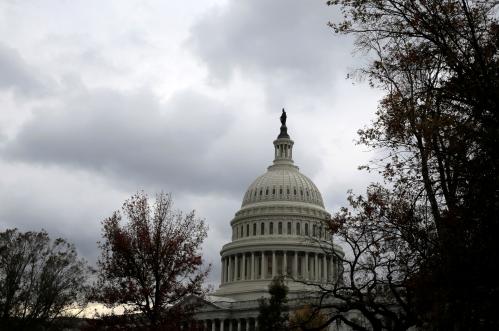Steven Mnuchin, the former Goldman Sachs executive tapped to run the Trump Treasury Department, says that returning GDP growth to 3 to 4 percent will be his number one priority. According to a Trump campaign fact sheet, the new Administration conservatively estimates a 3.5 percent growth rate that would create 25 million jobs over the next decade. The economic plan includes cutting taxes, overhauling regulations, encouraging energy production, and pursuing an America-first trade policy.
Some of this is standard supply-side economics. These policies have produced disappointing results in the past and will likely do so in the future. A trade war and the kind of deficit spending implied by Trump’s proposed tax cuts would, in fact, be a big drag on long-term growth. Manufacturing jobs are especially at risk. If interest rates continue to climb in response to deficit-financed tax cuts or infrastructure spending, the dollar will strengthen, making American goods more expensive/less competitive in world markets.
All administrations have a habit of forecasting rosy scenarios, but this one is even rosier than usual.
To be sure, we might well see strong growth in the very short run before the economy hits its ceiling and inflation resurfaces. But as an estimate of the economy’s longer run potential, extending out over a decade, a growth rate of 3.5 or 4 percent is fanciful.
Here’s why. Labor force growth is slowing to a crawl. The population is aging, the dramatic advance of women into the labor market is waning, and male participation has been declining for decades. We will be lucky if the labor force grows by 0.5 percent a year. That means labor productivity growth would have to grow by 3 percent a year. Over the past decade, it grew by just over 1 percent. So the Trump administration seems to be assuming that they can more than double productivity growth.
For these reasons, no serious forecaster is projecting a growth rate in this range, as shown in the chart below. And each new forecast is lower than the last, as our official economy-watchers reflect recent experience in their estimates.
| LONG-RUN REAL GDP GROWTH FORECAST | |
|---|---|
| FOMC central tendency (December 2016) | 1.8 to 2.0 |
| Congressional Budget Office (August 2016) | 1.9 |
| Office of Management and Budget (July 2016) | 2.2 |
So, is a near-doubling of the GDP growth rate realistic? No. But even if it were, it would be less important than ensuring that whatever growth we have is more equally distributed.But let’s assume we can bump up the growth rate. Even then, unless something is done to ensure that growth is more broadly distributed, the average American is unlikely to benefit very much. This lesson was reinforced recently by the release of new data showing that, on average, if you were born in 1940, you had a 90 percent chance of being better off than your parents, but the odds fell to 50 percent if you were born in the 1980s. Both lower growth and rising inequality contributed to this depressing story for today’s younger generations. In addition, the study—by Raj Chetty and colleagues—found that more equally distributing growth would be more effective at improving the average person’s life chances than simply restoring GDP growth to its golden years’ rate. In fact, in today’s lopsided economy, it would take a growth rate of more than 6 percent to revive the income trajectories experienced by middle class children in 1940.








Commentary
Op-edThe Trump administration’s claim it can double long-term GDP growth is unrealistic
December 20, 2016